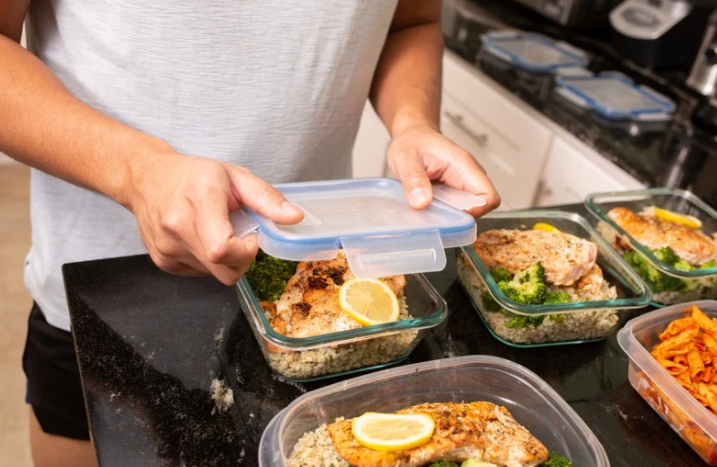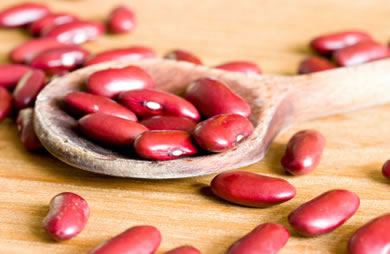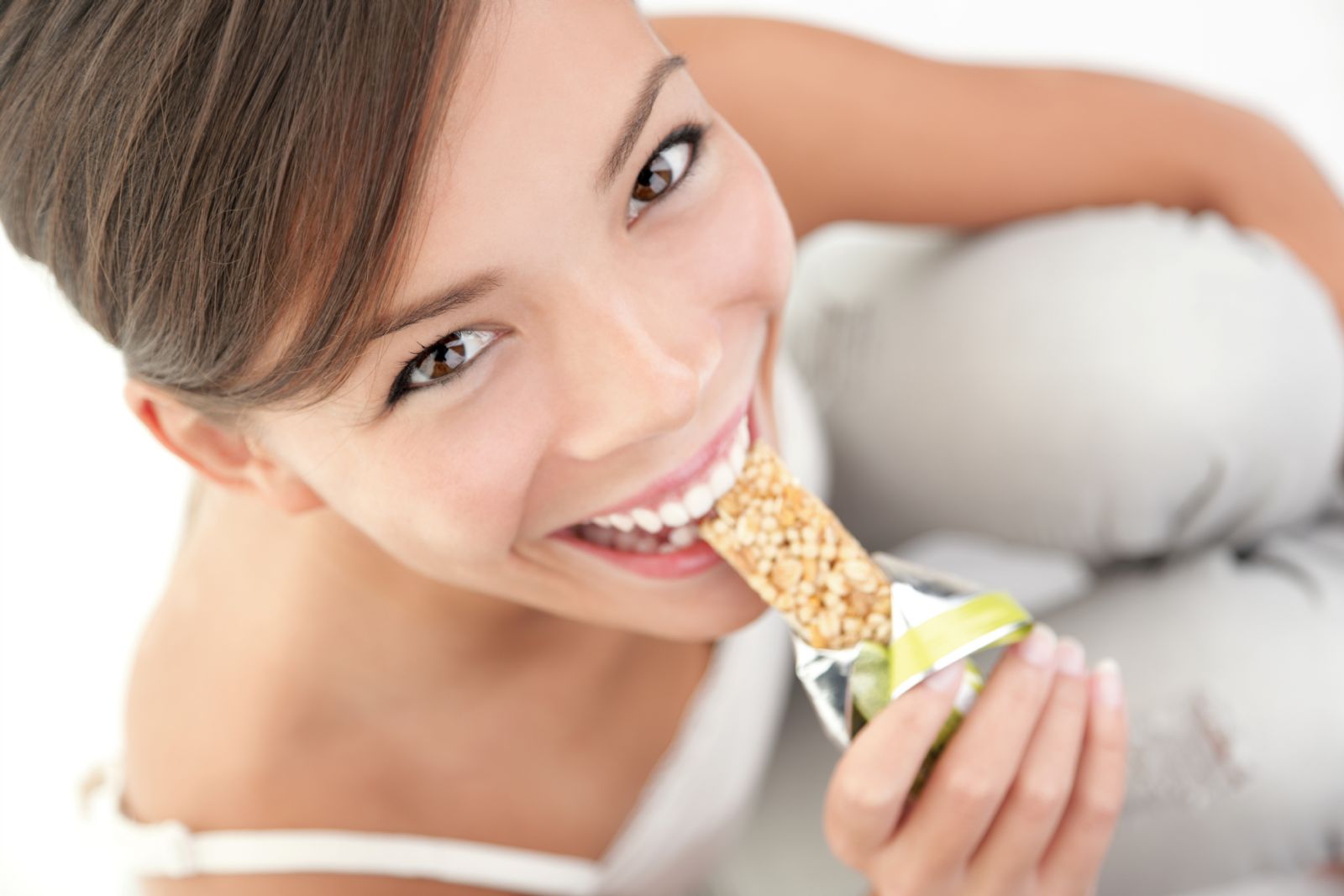According to the Centers for Disease Control and Prevention, 49 percent of adults in the United States consume at least one sugar-sweetened beverage a day, adding about 145 calories which are void of any nutritional benefit. Per the American Heart Association's added sugar recommendation, this one can of regular soda greatly exceeds the recommendation for women (no more than 100 calories per day or six teaspoons) and puts men immediately at their upper limit (no more than 150 calories per day or nine teaspoons).
It's easy to understand why it is important to stop the pop, but how to take on this challenge is a different story. If you're in the habit of enjoying a soda at lunch or during your child's soccer practice, your body has likely come to crave that mid-day or nightly sugar boost. Breaking the habit, while not anywhere close to impossible, does take some careful planning, self-control and dedication. If you're determined and have 28 days, this "Stop the Pop" challenge is just what you need.
The goal is simple: Spend 28 days consciously working toward a soda-free lifestyle. Whether you opt to go cold turkey or ease yourself off slowly, the tools and strategies can easily be applied to other sugar-sweetened beverages, including sugar-packed fruit punch, fruit-flavored drinks, sports drinks, energy drinks, and hot or cold coffee and teas.
A Word About Diet Drinks
As you will see, the challenge provides diet beverages sweetened with zero-calorie sugar substitutes as an alternative. Using such diet drinks is strictly your choice. If you enjoy these diet beverages, use them to your advantage. There is no danger in using artificial sweeteners. In fact, there is research showing that diet drinks may be a beneficial weight-loss tool since the sweet flavor and fizz may help improve adherence to one's diet. However, if you prefer not to consume diet beverages, that is also fine. This is your challenge, so make it your choice.Preparing to Stop the Pop
Once you've made the decision to stop drinking unnecessary calories, it's time to get ready to go. Putting together a few strategies and preparing for some of the side effects of dropping soda before you commit to 28 days soda-free will save you from frustration down the line.
Step 1: Decide if you want to take the "cold turkey" approach or wean off gradually
If you're the type to just yank off the bandage and deal with the brief episode of pain, then cold turkey may be your best bet. You may experience headaches for about four to five days due to the decrease in sugar and possible decrease in caffeine (depending on your substitute beverages), but in the second step of this challenge you'll implement a few strategies to deal with the temporary pain. The "cold turkey" approach works well because you more quickly experience a higher energy level and increased motivation from your accomplishments, making your more likely to stick with your goals.
If you prefer using small steps over time to reach your ultimate goal, then weaning off gradually may work best for you. If so, take time now to set up your weaning steps. For example, if you consume four sodas every day, start cutting back by one soda per day during the first week. Then in week two, cut out two sodas per day, and so on until you're at no soda during the week. You can also try diluting regular soda with its diet cousin. Start by using three-quarters regular and one-quarter diet soda for the first week, then half and half during week two, one-quarter regular to three-quarters diet in week three and finally 100 percent diet in your final week.
While headaches are less likely when you wean gradually off sugar and caffeine, be sure to have a headache plan established just in case.
Step 2: Prevent and control headaches
With any drastic decrease in sugar and/or caffeine, withdrawal headaches are a possibility. These usually last for about four to five days and are most intense on days two and three. By sticking with this quick tips, you'll decrease your discomfort over those few days. Keep in mind that the finish line is in sight and the pain is only temporary.
- Start your plan on your last work day for the week. Your headache may begin by the end of your workday. Headaches will likely be the most intense on Saturday and Sunday, so try to avoid scheduling anything important if possible. Gather the help of others to care for animals, children, household chores and other tasks. Plan to stay at home and cope. You will probably not feel like exercising. By Monday, your headache will be less intense, making it easier to head to work. However, if you wake up feeling uncomfortable, consider taking sick day so that you are fully charged and well rested when you return on Tuesday.
- As needed, use over-the-counter pain medication according to package directions to help relieve pain during this initial stage.
- Prepare yourself with soothing comfort. Listen to relaxing music, watch your favorite movies or place a heating pad or heated blanket on your head, neck and shoulder area while at home. Ask your partner to give you a gentle head, neck and shoulder massage or take a soothing bath. Nap in a dark room in a comfortable bed.
Step 3: Find substitute beverages
What do you plan to drink in place of the regular soda during the 28-day challenge? Now is the time to taste other beverages or various recipes to determine your preferences. Every palate is different, so experiment with a few options to see what feels best. Tap, bottled or filtered water are ideal for keeping your body properly hydrated and drinking enough water comes with a range of wonderful health benefits. If you prefer a little flavor, try adding a small splash of 100 percent juice, fresh or frozen fruit, vegetable, herbs or spices to your water. Get started with an infusion water bottle and combinations such as one sliced strawberry, two cucumber slices and three basil leaves; two cubes of watermelon, cantaloupe and honeydew; or two cubes of pineapple and mango plus two mint leaves. Others swap options include:
- Diet soda or iced tea
- Purchased zero-calorie, flavored water drinks or flavoring packets.
- Hot or cold zero-calorie tea, herbal tea and coffee
- Diet hot chocolate and diet apple cider mix
- Add fizz to your water with zero-calorie carbonated water, sparkling water or seltzer water.
For each of your preferred options, do you prefer that beverage to be served at room temperature, refrigerated or over ice? If over ice, what size cubes? Large cubes, small cubes, crushed? What type glass, cup or mug do you prefer? These minor details can take your ho-hum beverage and turn it into a refreshing treat. The tastier and more eye-appealing the beverage, the less tempting the soda.
Step 4: Clean up your environment
Look at all the places where you have regular soda stored—at home, the pantry, your workspace, in the car, the break room refrigerator—and get rid of it. Replace the soda with some of the substitute beverage ideas you decided on in the previous step. Don't wait until the craving hits to stock these areas. Do the cleaning and restocking before your challenge begins to keep cravings and temptation at bay.
Step 5: Plan for parties, restaurants and vacations
Don't be caught high and dry at a social event. Plan ahead and take a few of your preferred portable beverages to all your social gatherings and events. Sit away from the fountain pop machine at restaurants. Have a friend get you a diet drink from the beverage table at the party. Don't carry small bills or change for the pop vending machine. Avoid these high-trigger areas.
Step 6: Find sources of soothing comfort
There will be times during this challenge when your cravings for soda will be intense, so discovering ways to soothe your body without turning to your vice is vitally important. Research comfort ideas and practice the techniques before the challenge begins.
- Breathing to energize: Sit comfortably. Raise your arms straight in the air as you breathe in, then lower your arms and exhale. Repeat. Extend arms to the side and slowly rotate your arms forward and backward, 10 times each, breathing naturally.
- Try a puzzle such as Sudoku, crossword or computer solitaire.
- Ask for support from a friend. Your buddy should be nonjudgmental, a good listener and shouldn't want to compete with you.
- Have calming time with your pet. Walk your dog, pet your cat or talk to your bird.
- Write a compassionate letter to yourself.
- Give yourself a foot massage. Sit in a chair. Roll your foot over a frozen water bottle, a broomstick handle or a tennis ball.
- Listen to your favorite music.
- Grab a coloring book and get creative.
Step 7: Track progress during the next 28 days
What will you use to record your ideas, thoughts, struggles and accomplishments? Use a notebook, computer or your phone to indicate when your craving for soda is at its peak. Is it during that afternoon slump? After the kids are in bed? After an argument with your mother? Use the ideas you generated in steps three and six to cope with these high craving time.
Step 8: Set up your rewards system
Rewards can be great motivators. You can set up your reward however you choose, as long as they are not related to food, beverage or alcohol. Make sure that they are in line with your healthy living goals and will make you feel happy and accomplished. Here are two ideas:
- Use a calendar sheet with 28 days. Every day you stick to your plan, mark an X.
- At the end of the challenge, count the number of days you were soda-free. Then, reward yourself with increasingly more desirable luxuries as you get closer and closer to your 28-day goal.
- Place an empty jar in an area of your home that you regularly frequent. Every day that you stick with your plan, place a quarter or any amount of money the jar. At the end of the challenge, use the money to treat yourself to a reward.
Your 28 Days and the Aftermath
Using your notebook, computer or phone, write down a few notes each day of the 28-day challenge. How were you feeling? What went well? Which beverage substitutions did you use? How intense was the craving for regular soda? Which techniques worked to lessen this craving? What could have worked better?While you may have a setback or even several, remember why you started and don't let it destroy all your progress. You can do this!
At the end of your 28 days, take time to review all the notes that you have written during your journaling. This valuable information will help as you plan for the future. What were the overall physical, mental and emotional benefits of the challenge? Which strategies worked well? What would you have changed? What were the barriers? How did you handle these? Were there people or situations sabotaging your challenge? How did you handle this?
Benefits of 28 Days Without Soda
| Number of 12 oz cans of regular pop consumed daily before starting the 28 days | 1 | 2 | 3 | 4 | 5 | 6 |
| Amount of Sugar Saved in 28 Days | 5.8 cups | 11.7 cups | 17.5 cups | 23.3 cups | 29.2 cups | 35 cups |
| Number of Calories Saved in 28 Days | 4,200 | 8,400 | 12,600 | 16,800 | 21,000 | 25,200 |
| Estimated Pounds Lost in 28 Days | 1.2 | 2.4 | 3.6 | 4.8 | 6 | 7.2 |
Now that you have taken the time to evaluate the past 28 days, you are ready to plan for your future. What's it going to be? Perhaps you decide that no regular soda is how you visualize your life. Perhaps you plan to have one can of regular soda only once a week or only on pizza night or special occasions. It's your plan; you're in charge. What do you want it to be?













